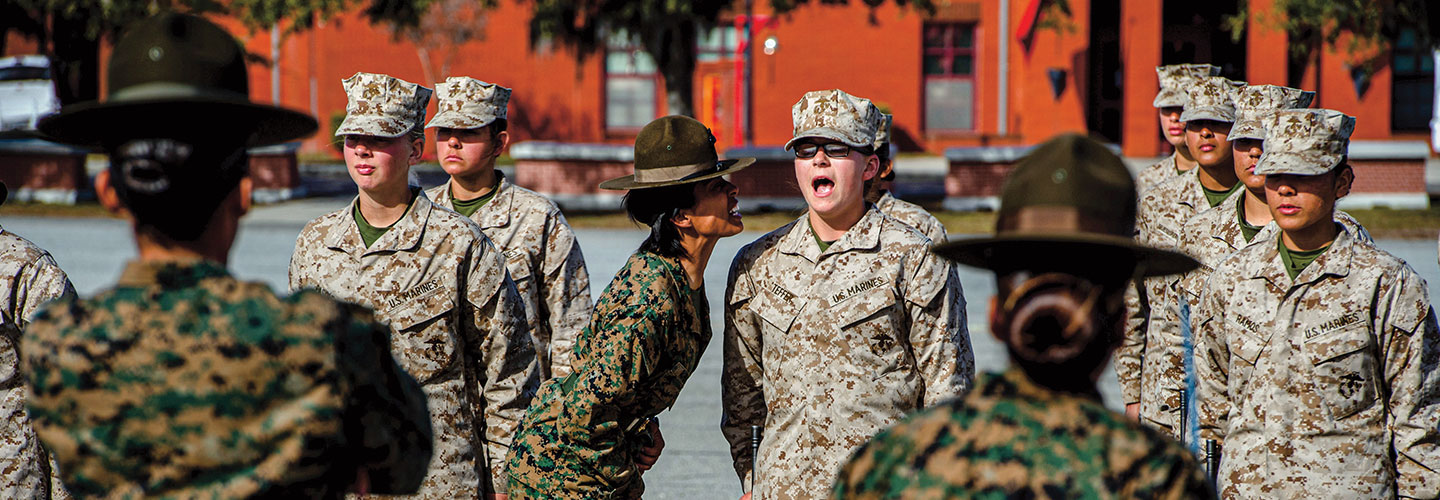Jacob James, 19, eyed the makeshift rope bridge in front of him at Parris Island, a Marine Corps training location in South Carolina. The obstacle was part of the Crucible, a demanding 54-hour exercise that new service members must complete to officially become Marines.
For this part of the exercise, James was in charge of 15 of his peers, both men and women. The bridge consisted of just two ropes—one for their feet and one above their heads to hang on to. Their goal was to move six 30-pound ammunition cans across it.
The team had not worked together before, even though they were all from the same unit, Bravo Company. The company’s roughly 330 recruits had spent 11 weeks divided into groups called platoons. And at Marine Corps boot camp, platoons are separated by gender.
Jacob James, 19, eyed the makeshift rope bridge in front of him at Parris Island. That is a Marine Corps training location in South Carolina. The obstacle was part of the Crucible, a tough 54-hour exercise. New service members must complete it to officially become Marines.
For this part of the exercise, James was in charge of 15 of his peers, male and female. The bridge was just two ropes. One rope was for their feet. The other, above their heads, was to hang on to. The team’s goal was to move six 30-pound ammunition cans across it.
The team was from the same unit, Bravo Company. But they had not worked together before. Bravo Company’s roughly 330 recruits had spent 11 weeks divided into groups called platoons. And at Marine Corps boot camp, platoons are separated by gender.

